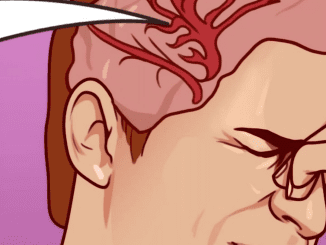Ellen DeGeneres, the beloved talk show host, recently made headlines after revealing an unexpected symptom of her COVID-19 experience: severe back pain. Although many are familiar with common COVID-19 symptoms like fever, cough, and loss of taste or smell, Ellen’s encounter with excruciating back pain highlights the lesser-known effects of the virus. In this article, we’ll explore Ellen’s experience, why back pain may occur with COVID-19, and what this means for others recovering from the virus.

Ellen’s Journey Through COVID-19
After 19 years on air, Ellen ended The Ellen DeGeneres Show amidst controversy surrounding her workplace environment. Stepping back from the spotlight, she shifted her focus toward wildlife conservation, building The Ellen DeGeneres Campus of the Dian Fossey Gorilla Fund in Rwanda. However, at the height of the pandemic, Ellen found herself dealing with COVID-19 and a surprising symptom that took her, and her fans, by surprise.
Ellen shared her experience on social media, stating, “I feel fantastic now, but what they don’t tell you is that you’ll have severe back pain. I had no idea that was a symptom until I spoke with others who experienced it too.” Her post resonated with many, as they too discovered that body aches, particularly back pain, can accompany a COVID-19 diagnosis.
Why Back Pain and Muscle Aches May Be Linked to COVID-19
In the early days of the pandemic, the Centers for Disease Control and Prevention (CDC) identified symptoms such as fever, cough, fatigue, and difficulty breathing. While muscle aches were listed as a potential symptom, back pain was not immediately linked to COVID-19. However, as more cases emerged, patients reported various kinds of pain, from sore muscles to stabbing back pain.
But why does COVID-19 cause such discomfort? The answer may lie in the body’s immune response. When the virus enters the body, it triggers an inflammatory response. This immune reaction helps the body fight off infection, but it can also lead to muscle and joint pain. The virus impacts multiple body systems, and prolonged immobility from illness or quarantine can exacerbate aches and pains in areas like the back and shoulders.
How Inactivity During Illness Contributes to Back Pain
With many COVID-19 patients required to quarantine or limit physical activity, a sedentary lifestyle has become more common. According to the NHS, reduced movement and prolonged sitting or lying down can weaken muscles, leading to stiffness and discomfort. In Ellen’s case, her unexpected back pain could have been a result of being less active during her recovery, causing her muscles and joints to become stiff and strained.
The NHS explains that our muscles need regular movement to stay strong and flexible. When movement is restricted due to illness, people often experience weakened muscles and stiffness. This is why many people recovering from COVID-19 report back pain, as they spend extended periods sitting or lying down, leading to muscle tension and discomfort.
The Rise of Back Pain During the Pandemic
Back pain has not only affected COVID-19 patients but also people who shifted to remote work during lockdowns. Many people found themselves working from home, often without ergonomic office setups. As a result, poor posture, extended hours at a desk, and inadequate seating led to increased reports of back and shoulder pain.

A study conducted with 388 participants in Malta found that, before COVID-19, approximately 30% experienced chronic back pain. After the pandemic began, that figure rose to 49%, with many reporting back pain for the first time. It’s clear that the pandemic’s impact on physical activity, combined with lifestyle changes like remote work, has contributed to a surge in back-related discomfort.
Differentiating COVID-19 Back Pain from Other Conditions
It’s important to recognize that back pain isn’t always linked to COVID-19. While COVID-19-related back pain typically occurs alongside other symptoms like cough, fever, or fatigue, other health issues can also cause back pain. For instance, conditions like the flu, pneumonia, and even stress can lead to muscle aches.
Common types of back pain include:
- A dull, constant ache: This type of pain is often due to muscle strain or stiffness from prolonged inactivity.
- Shooting or stabbing pain: Sharp, sudden pain may indicate nerve irritation or spinal issues.
- Radiating pain down the leg: Often associated with sciatica, this pain can signal nerve compression in the lower back.
- Pins and needles: This sensation may indicate nerve irritation or compression, especially if accompanied by numbness.
For those experiencing persistent back pain, it’s essential to seek medical advice to determine the underlying cause. While COVID-19 may be the culprit, other health conditions could also be at play, and a healthcare provider can help provide an accurate diagnosis and appropriate treatment.

Managing COVID-Related Back Pain at Home
If you’re experiencing back pain due to COVID-19 or prolonged inactivity, there are steps you can take to alleviate the discomfort. Here are a few practical tips for managing back pain during recovery:
1. Gentle Stretching and Movement
Start with gentle stretches that target your back and shoulder muscles. Light yoga, stretching exercises, or even a short walk can help improve circulation and relieve tension. Begin slowly, especially if you’ve been inactive, and gradually increase movement as you feel comfortable.
2. Use Heat and Cold Therapy
Heat and cold therapy can be effective in relieving muscle pain. Apply a warm compress or heating pad to relax tight muscles and improve blood flow. For areas experiencing inflammation, an ice pack can help reduce swelling. Alternate between heat and cold for best results.

3. Maintain Good Posture
If you’re working from home or spending extended periods sitting, be mindful of your posture. Ensure that your chair provides proper support, and keep your feet flat on the floor. Consider using a small cushion or rolled towel to support your lower back.
4. Stay Hydrated and Nourished
Muscle recovery requires adequate hydration and nutrition. Dehydration can lead to muscle cramps and stiffness, so make sure you’re drinking plenty of water throughout the day. Eating a balanced diet with anti-inflammatory foods, like leafy greens, berries, and omega-3-rich fish, can also aid in muscle recovery.
5. Gradually Return to Physical Activity
When you start feeling better, gradually increase your level of physical activity. Avoid jumping back into intense exercises right away; instead, focus on low-impact activities that allow your body to adjust. This can include walking, swimming, or low-intensity stretching exercises.
Conclusion: Ellen’s Story Highlights the Importance of Listening to Your Body
Ellen DeGeneres’ revelation about back pain as a COVID-19 symptom has brought attention to an often-overlooked aspect of the virus’s impact. Her experience serves as a reminder that COVID-19 affects everyone differently, and recovery can come with unexpected challenges. Whether it’s back pain, muscle aches, or other symptoms, it’s essential to listen to your body and prioritize self-care during your recovery journey.
As we continue to learn more about COVID-19’s long-term effects, Ellen’s story encourages us to stay informed and take proactive steps to care for our health. By recognizing the impact of reduced activity on our muscles and incorporating gentle movement, proper hydration, and good posture, we can manage back pain and support a smoother recovery.


